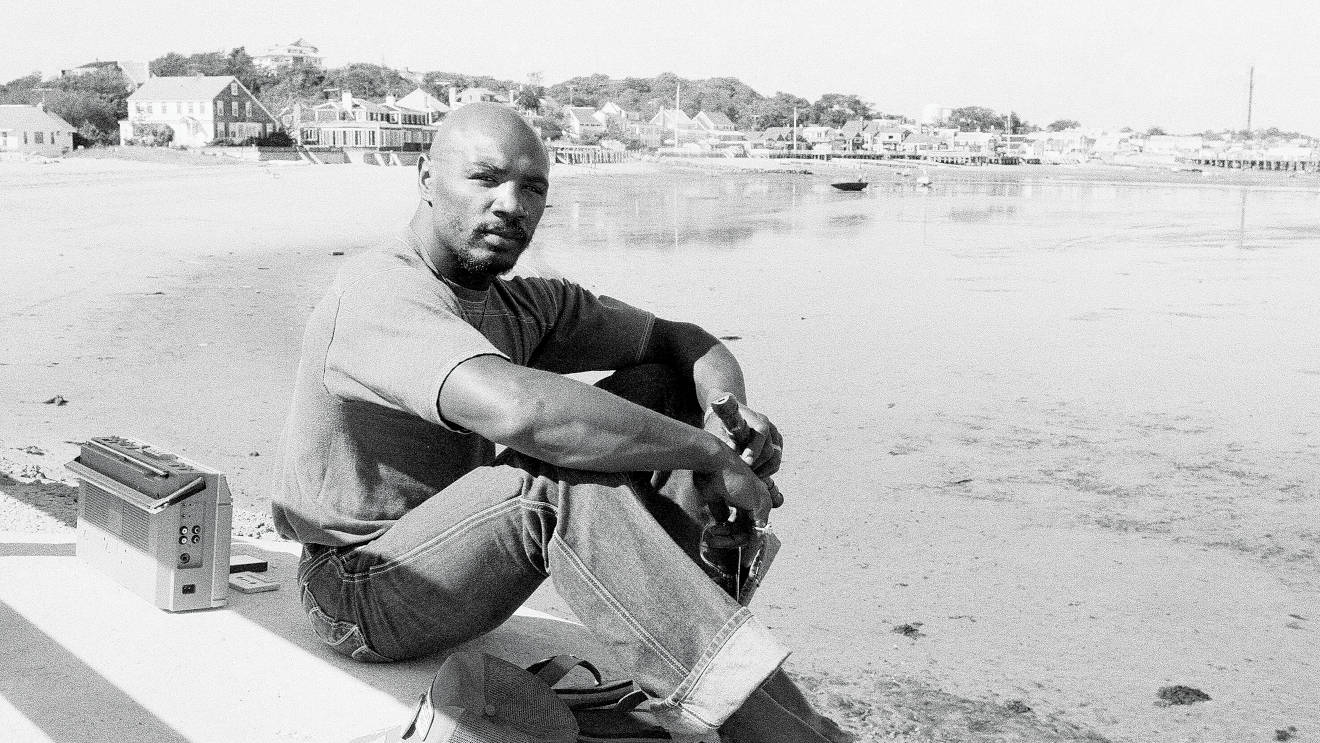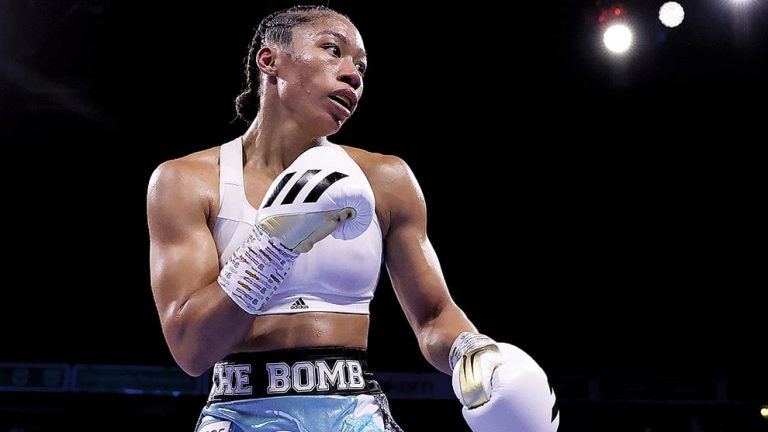Sugar Ray Seales still carries his 1972 Olympic gold medal everywhere he goes
Stricken by blindness, Sugar Ray Seales was recently discovered living in a homeless shelter. Here, Eric Armit delves into the story of a proud boxer with a gold-standard Olympic pedigree who fought Hagler, Palomino, Minter and more.
Born: 9 April 1952 (other sources suggest 4 September 1952) Saint Croix, U.S. Virgin Isles
Record: 68 fights, 57 wins (34 by KO/TKO), lost eight (three by KO/TKO against Marvin Hagler, Alan Minter and Dwight Davison) three draws.
Division: Middleweight
Stance: Southpaw
It culminated in 1972 Olympic gold: Sugar Ray Seales’s Amateur Career
Won Olympic gold medal at the 1972 Games. The only USA fighter to win a gold medal at the Games. He was a gold medal winner at the 1971 US National Championships and at the 1973 National Golden Gloves. In the US National Championships in 1971, he beat Carlos Palomino in the semi-finals, and in 1972 lost to Palomino in the gold medal bout. In the US Olympic Trials, Seales beat Pete Ranzany, who had eliminated Palomino.
Seales turned professional in January 1973 in Tacoma, winning an eight-rounder on his debut
1973 – Had 14 fights, winning them all, beating 100-fight veteran Chucho Garcia and Britain’s Dave Coventry.
1974 – Had 10 fights, winning 8, beating David Love and losing, then drawing with Marvin Hagler.
1975 – Had 7 fights, winning 6, beating Mike Dixon, Mike Lancaster and Renato Garcia but losing to Eugene Hart.
1976 – Had 4 fights, beating George Cooper and Bobby Hoye but losing to Alan Minter.
1977 – Had 11 fights, losing to Ronnie Harris in March, then winning 10 in a row, including victories over Tony Gardner, Vincente Medina, Mike Hallacy and Doug Demmings.
1978 – Had 7 fights, beating Sammy Nesmith, drawing with Willie Warren and losing a majority decision to Ayub Kalule in Denmark.
1979 – Had three fights, including a loss against Marvin Hagler and a draw with Mike Colbert.
1980 – Was 4-1, Beating 31-0 Art Harris but losing to Dwight Davison. Outpointed Jamie Thomas in a fight that eventually led to Seales retiring.
1981 to 1983 – Won 7 of his 8 fights, beating Sammy Nesmith and John LoCicero but losing to unbeaten James Shuler. He had his last fight in January 1983 stopping Max Hord in the first round.
The Story of Sugar Ray Seales
Seales was born in St Croix, US Virgin Islands, where his father served in the US Army. He was one of eight children whose father had been part of the US Army boxing team. The family moved to Tacoma, Washington, in 1965.
He and his brother Wilbur joined the Tacoma Boys Boxing Club. Amateur boxing in the Pacific Northwest was booming at the time, producing future champions such as Rocky Lockridge, Leo Randolph, and Johnny Bumphus.
BoxRec shows Seales starting out in 1966 in the 95-lb division and working up through the weights, winning the Tacoma Golden Gloves, Seattle Golden Gloves, Inland Empire State Golden Gloves, Oregon Golden Gloves, and Western Region Golden Gloves.
He won a bronze medal at the 1970 Golden Gloves at 132 lbs before winning the 1971 National title at 139 lbs, beating Carlos Palomino on his way to the final.
He lost to Palomino in the 1972 National final but rebounded to win his way through the US Olympic Trials. The Games were held in Munich, and in his first bout, Seales beat German hope Ulrich Bayer. Just 19 years old at the time and by then in the US Air Force, Seales fought his way to the gold medal.
Still, the Games were overshadowed by the murder of eleven Israeli coaches and athletes and a German policeman by terrorists of the Black September group who invaded the athletes’ quarters.
It seemed possible that the Games would be abandoned, but they continued with Seales being the only member of the US Boxing Team to win a gold medal. Seales turned professional, but his signing-on bonus was a mere $1000 (for winning a gold medal in 1976, another Sugar Ray -Leonard- was paid $40,000).
BoxRec shows Seales as having a 48-8 record as an amateur, but this would omit his fights as a junior and club shows, etc., and some sources, including Seales, give his amateur record as 338-12.
He won his first 21 paid fights before losing on points to 14-0 Marvin Hagler in August 1974 in Boston. They fought again in November 1974 in Seattle and the result was a majority draw with one judge having Seales the winner and the other two scoring it a draw.
Losses to Eugene Hart, Alan Minter and Ronnie Harris almost derailed Seales but he rebounded by going 15-0-1 in his next 16 fights. In November 1978 in Denmark, he lost a majority decision to future WBA light-middleweight champion Ayub Kalule.
Any dreams Seales had of a title shot ended in February 1979 when he was floored three times and stopped in the first round by Hagler. In 1980, a stoppage loss against Dwight Davison was a further blow, but an even more damaging blow came in his next fight in August 1980. He scored a points win over the very modest Jamie Thomas but was thumbed in the left eye and suffered a detached retina.

Stellar company: Seales fought Marvin Hagler three times, including a 1974 draw. (Photo by Albert Foster/Mirrorpix/Getty Images)
Seales already had problems with his right eye but he successfully covered up both injuries and continued to box with very limited vision, winning seven of his next eight fights before his problems were leaked and he was forced to retire. The eye damage was so serious that he was ruled legally blind. He went through seven operations, which resulted in a slight improvement in his right eye vision.
The operations swallowed all the money Seales had and he was forced to file for bankruptcy with the judge in his case writing of Seales that, “he couldn’t even pay the bankruptcy filing fee”. Attempts were made to put on a benefit show for Seales in Tacoma but despite the attendance of Muhammad Ali, Hagler, Ray Mancini and others, only 4,000 tickets were sold, effectively raising no money.
When Seales’s plight had first become known Sammy Davis Jr said Seales was suffering from three B’s: black, blind and broke. Davis had been a prime mover in getting the benefit show off the ground, and after it failed, Davis donated $100,000 to clear Seales’s debts. That gave Seales the chance to start his life anew.
From 1984, he spent 17 years working with autistic children in schools in the Tacoma area before retiring and moving to Indianapolis so his wife could be nearer to her family. Inevitably, Seales made his way to a local gym and began to work with young boxers there, including the currently unbeaten lightweight world contender Frank Martin.
Seales was inducted into the Indianapolis Boxing Hall of Fame in 2018 and the US Virgin Islands proclaimed 14 April 1984 to be Sugar Ray Seales Day. After his wife died, Seales moved back to Tacoma where some of his siblings still lived. He is 71 now and proud that he never let his misfortune beat him down. One thing you can be sure of is that Sugar Ray still carries his gold medal with him every time he leaves the house.
He shows the medal to any young aspiring boxer he meets and not just to boxing people. He recognises the thrill it must give to be pictured with a gold medal. Life may have taken away most of his vision, but no one can ever take away the gold medal he won in 1972.



